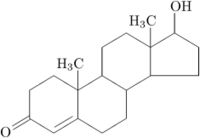TESTOSTERONE HAS A BIG JOB: It helps maintain a man's libido, sperm production, muscle, and bone. Unfortunately, this hormone often opts for early retirement.
"Testosterone starts dropping from your early 30s, and it's a long, gradual decline over decades," says Ramzi Hajjar, M.D., an associate professor of medicine at Saint Louis University Health Sciences Center.
By age 70, a man typically has half the testosterone he did when he was 30. But some men lose it faster than others, and below-normal levels can occur in your 30s or 40s; type 2 diabetes, HIV, and excess body fat can all lead to deficiencies.
This is serious stuff, considering that low testosterone increases your risk of heart disease, prostate cancer, and Alzheimer's disease, according to Abraham Harvey Kryger, M.D., author of Listen to Your Hormones: A Doctor's Guide to Sex, Love, and Long Life (Especially for Men).
When diagnosing testosterone deficiency, health-care providers look at overt symptoms as well as blood levels. Signs include decreased sex drive, loss of morning erections, lack of energy, weakness, memory problems, and irritability. (Saint Louis University offers a quick quiz to determine if you're at risk; go to slu.edu/adam/maletquiz.pdf.)
The best measure of testosterone is of the amount that is bioavailable, i.e., the testosterone freely circulating in the blood. Free testosterone of less than 70 nanograms per deciliter (ng/dl) is considered abnormal. There are individual variances, so even if you're asymptomatic, checking your testosterone now will help gauge how you're doing down the road.
more hormone
IF YOUR NUMBERS come back low, your doctor may recommend replacement therapy. Patch or gel products are applied to the skin daily, although not all men will have good absorption. Injections every two to three weeks are an effective alternative, and eventually can be done at home. "Treatment restores the level back into a normal range so you have a reversal of symptoms," says Kryger, who has patented a high-potency topical application (wellnessmd.com).
Possible side effects from supplementation include liver complications and blood clots. Also, it's important to be monitored with rectal exams and prostate-specific antigen tests because elevated testosterone can increase the growth and spread of prostate cancer.
What about men with normal testosterone who want a little boost in the weight room or bedroom? The National Institute on Aging maintains that such therapy is "scientifically unproven" for the treatment or prevention of any physical or psychological changes that a man with normal testosterone levels may go through over the years.
The U.S. government recently banned over-the-counter steroid prohormones, except for DHEA (dehydroepiandrosterone), which the body converts into testosterone. "In general, the prohormones are pretty weak," says Robert Tan, M.D., associate professor of internal medicine at Baylor College of Medicine and author of The Andropause Mystery: Unraveling Truths About the Male Menopause. "Very small amounts actually are broken down to form testosterone."
As for natural remedies, research has found that Eurycoma longifolia Jack (aka Tongkat Ali) and Tribulus terrestris, a virility booster used in Ayurveda and Traditional Chinese Medicine, increased the libido of male rats. And a report in the Journal of Exercise Physiology Online found that a formula of zinc, magnesium, and vitamin [B.sub.6] increased testosterone levels and muscle function in college football players.
Compared to direct replacement, however, their role is limited. "They may--if they work at all--increase testosterone by such small amounts, it's clinically and physiologically insignificant," says Hajjar.
Beyond pills and patches, the gym may offer the most natural testosterone enhancer, at least temporarily. In a study published in the Journal of Strength and Conditioning Research, 30 minutes of treadmill running increased testosterone by 27 percent, with levels returning to normal 30 minutes after the run. Seems this is a hormone that could enjoy an active retirement after all.
COPYRIGHT 2005 Weider Publications
COPYRIGHT 2005 Gale Group



